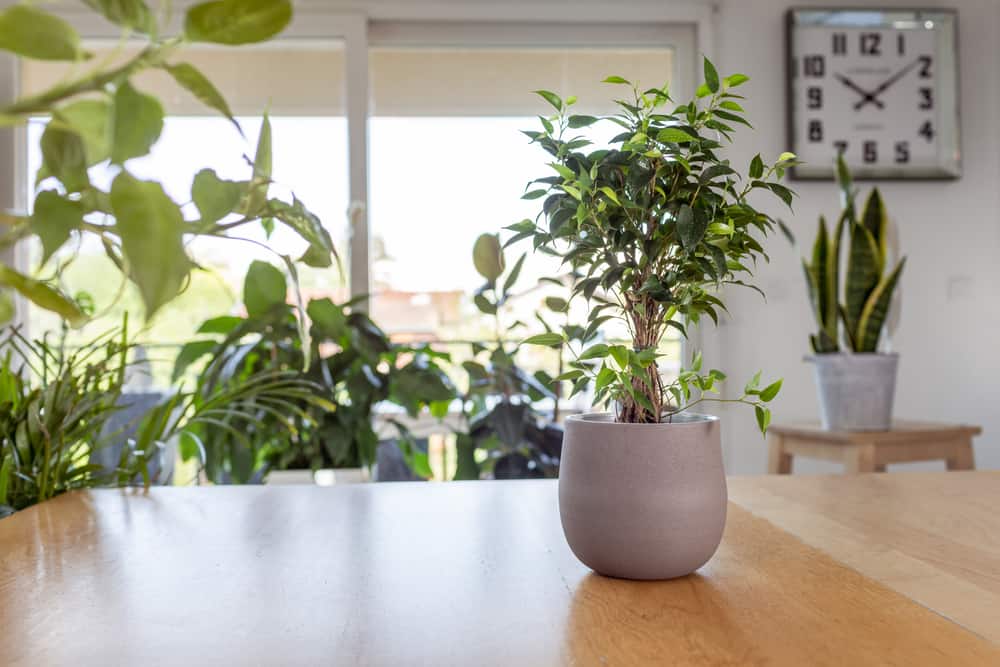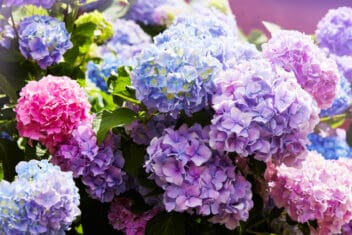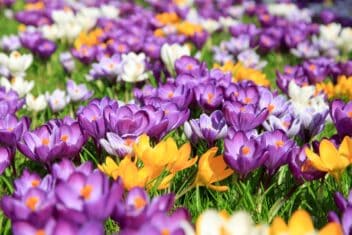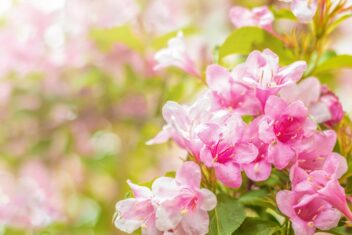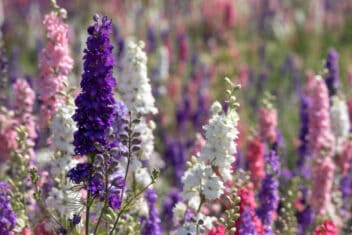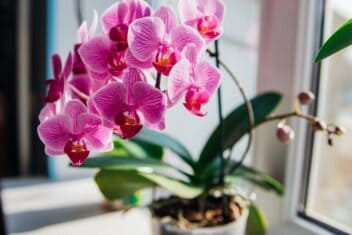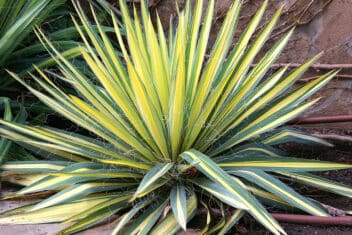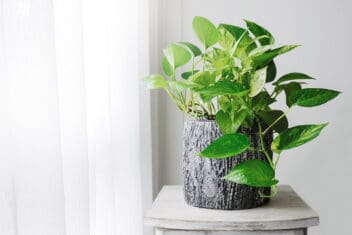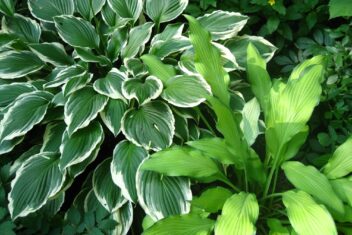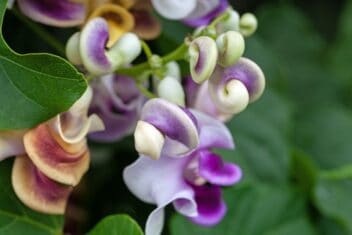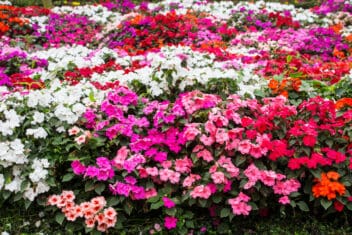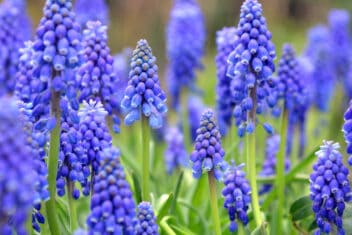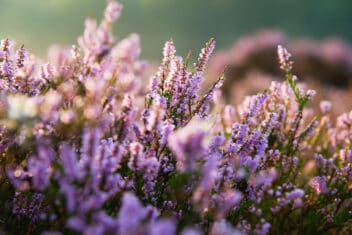Weeping figs are an impressive houseplant, and equally as stately as an outside specimen. It was a popular pot plant in the 1970s and 1980s before falling out of favor for a while. Now, growing weeping figs is back in style.
Who knows why plants become trendy again, but I suspect in this case it’s because it looks good in any room. It’s a delicate-looking plant that brings an elegant touch of nature into the home.
If you’ve been thinking about adding a weeping ficus to your indoor houseplant collection, read on and let’s see if we can convince you.
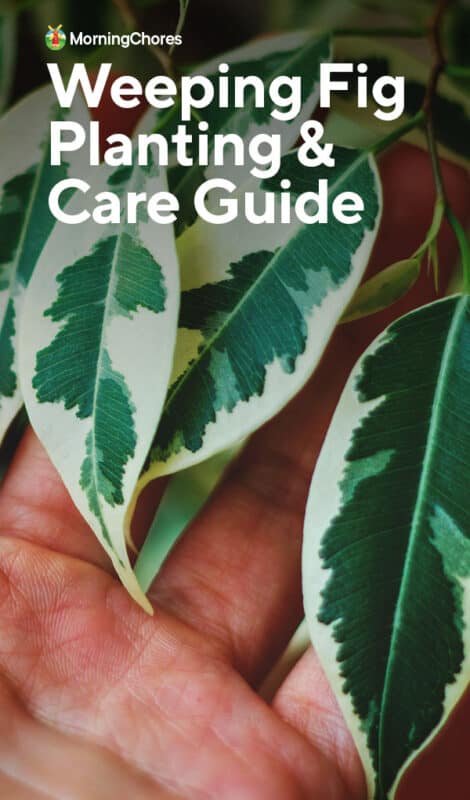
What is a Weeping Fig?
Originally from South East Asia and Northern Australia, weeping figs are an evergreen tropical plant that are suitable for indoor growing and as an outdoor tree in the right environment. In the US, that means USDA Growing Zones 9-11.
Weeping fig (Ficus benjamina) is also known as the ficus tree or benjamin fig. The plant has an elegant form with graceful branches and ovate foliage that may be solid green or variegated. It grows on average from 3-6 feet tall when grown inside. Outside, weeping figs can grow to a hundred feet, depending on which type you’re growing.
The stems or trunks of houseplants can be braided for aesthetic appeal.
Best Species and Cultivars of Weeping Figs
There are plenty of varieties of weeping figs, so you can usually find one that suits your taste and space.
Bushy King
This is a compact variety that has narrow leaves with yellow edges. It has a dense, round growth habit and stays under 13 feet outdoors (and far smaller indoors). All that combines to make it the perfect weeping fig for container growing.
Danielle
Danielle has particularly dark green leaves and a pendulous growth habit. This variety is also less likely to suffer from leaf drop. which is a problem with many varieties. Stays between 8-12 feet when fully grown.
Midnight Lady
Compact with a graceful weeping growth habit, ‘Midnight Lady’ can grow to a stately 15 feet tall. Even more striking, the leaves are extremely dark green with curly margins.
Judith
This is a perfect cultivar for a space that has reduced light. While all weeping figs will drop their leaves if they are moved or if their conditions change drastically, ‘Judith’ will generally only have minimal leaf drop.
Exotica
The leaves of this cultivar are slightly twisted, which gives it a graceful appearance.
Variegata
If you’re interested in growing a weeping fig that appears to constantly changing, grab a ‘Variegata.’ The young leaves start out white and turn greyish-green as they mature.
Other cultivars worth checking out include:
- Too Little – a dwarf variety that is particularly good for bonsai
- Golden Monique
- Reginald
- De Gantel
- Golden King
- Wasana
How to Plant Weeping Figs
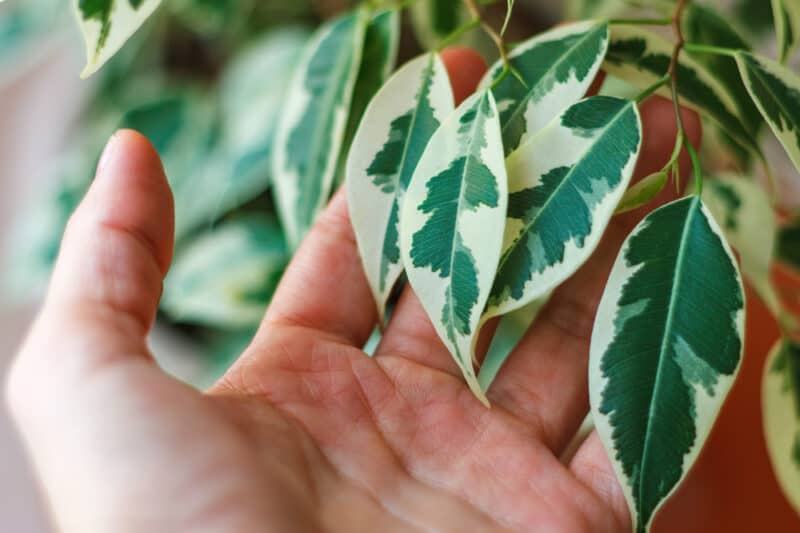
Weeping figs need bright, indirect sunlight. They can be right in front of a window if the sunlight is filtered by sheer curtains. Some cultivars, such as the heavily variegated types, even grow best with lower light levels.
Keep weeping figs away from cool drafts or areas of the house where sudden gusts of wind may enter.
The right temperature for weeping figs is between 75-85ºF during the day. A drop in nighttime temperatures to 65-70ºF is perfect.
Weeping figs are happy growing in pots that constrict their roots. You can limit the size of the tree somewhat by planting it in a small container that is about the same size as the rootball. Keep in mind that you will need to dig the plant up and trim the roots slightly before placing it in fresh soil about once a year or every other year.
Planting Weeping Figs Outside
In USDA Growing Zones 9 -11, you can plant weeping figs outside. They are tall trees reaching up to 60 to 100 feet, depending on the cultivar. The roots of these outside trees grow extremely fast and may damage nearby building foundations and concrete paths.
Make sure you plant it well away from any structures, sidewalks, or roads that may be damaged. You should also double-check that you’re allowed to plant them in your area.
The soil must be well-draining, and although an indoor weeping fig will do well in indirect sunlight, an outside plant can handle direct sunlight. Just water it well through the hot season.
Propagating Weeping Figs by Stem Cuttings
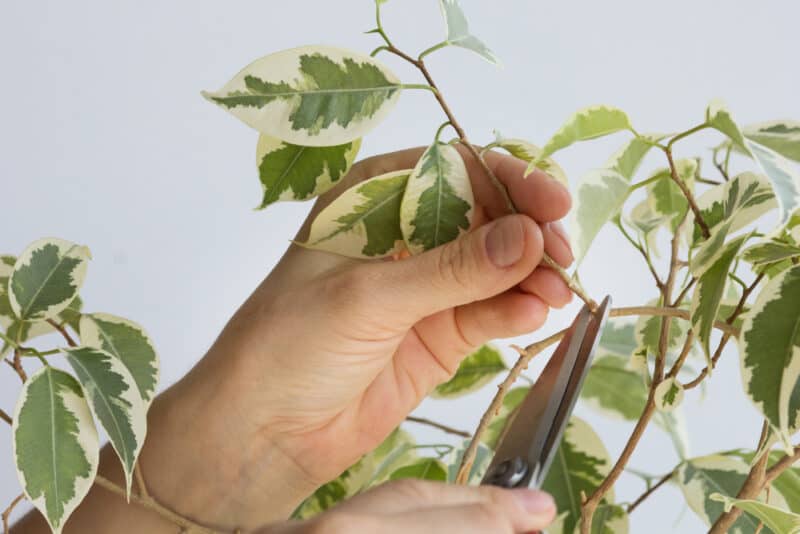
A good time to propagate weeping figs is when you are going to prune a stem to tidy the plant up, but you can do it anytime that suits.
Cut a stem that is about 6 inches long just below a node and make sure there are at least two or three leaves on the upper three inches of the stem.
A node is the intersection of the petiole (or stem of the leaf) and the main stem. The space between the nodes is called an internode.
Push a pencil into a container filled with good quality seed-raising mix to make a hole suitable for the stem.
Firm the soil around the stem and water it lightly. Place a plastic bag over the pot and place it in an area with indirect light.
Water every couple of days so that the soil remains moist, but not wet. If mold forms on the soil, remove the bag for a few hours to a day.
Give the stem 6 weeks to form roots, and then repot. If you gently tug the tree and it resists, it has formed roots.
Propagating Weeping Figs in Water
You can propagate weeping figs in a jar of water as well. Follow the steps used for propagating in soil, but put the stem in a glass or jar of water.
You will see the roots form and when they are about four inches long, transplant the plant to a pot filled with fresh potting soil.
Don’t worry about rooting hormones with weeping figs cuttings. They’ll form roots without it.
Caring for Weeping Figs
Weeping figs are heavy feeders and need consistent nutrients. The easiest way is to use slow-release fertilizer specific to indoor plants. That way, each time you water, the plant gets an extra boost.
If you prefer to feed manually, give the plant a monthly addition of fertilizer in the spring and summer. In the winter and fall, cut this back to once every two to three months.
Use an all-purpose fertilizer formulated for indoor plants.
You must have a consistent watering schedule with weeping figs. Keep the soil moist, but not wet. Weeping figs are particularly susceptible to root rot if left in sitting water.
Weeping figs love humidity. If you have a humidifier or plan to get one, all the better. Alternatively, mist the leaves once or twice a week. A good rule of thumb is the thinner the leaves, the more times to mist in a week. You’ll get to know your particular variety.
Pruning and Repotting Weeping Figs
Prune your weeping fig if it gets too big or you want to shape it. Make sure you remove any dead or infected foliage to prevent the spread of disease.
You can re-pot your plant, but make sure that the pot you use isn’t any larger than two inches of the current container. Repot when the plant is so rootbound, it may affect its health. Roots protruding from the drainage holes are a reliable sign.
- Remove the plant from its current container.
- Cut away any dead, damaged or mushy roots.
- Massage the root ball to loosen the roots and compacted soil.
- Fill the new container 1/2 way with new potting soil.
- Place the root ball into the container and fill to one inch from the top with soil.
- Firm down gently and water.
Be aware that every time you repot, your fig will drop leaves. It’s just the way they are and nothing to worry about.
Companion Planting for Weeping Figs
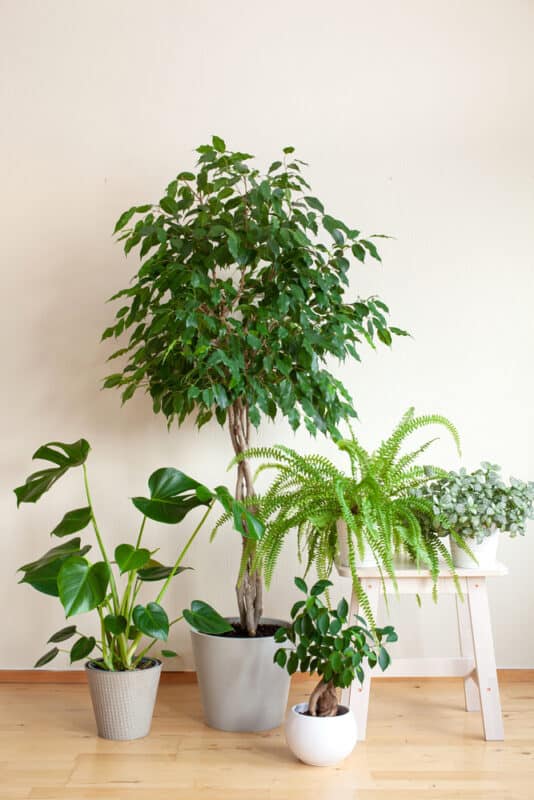
If you have an area in the house that humidity-loving plants thrive in, try these as companions. They all have similar humidity and watering requirements. The enemy of all of these plants is low humidity and overwatering.
Plus, growing plants in a group helps to raise the humidity level overall in the space.
- Dumb cane
- Schefflera (Umbrella plant)
- Peace Lily
- Spider plant (Likes lower humidity, but does okay with higher humidity as well)
Common Problems and Solutions for Growing Weeping Figs
Here’s what to look for when keeping an eye on the health of your weeping fig.
Leaf Drop
This is by far the most common problem with weeping figs. It can be caused by all manner of issues. Thankfully most of them are minor and easily remedied. The stresses causing this include:
- Overwatering and underwatering.
- Low light (for those varieties that like more sunlight).
- Temperature changes like wind gusts, air conditioning or heaters.
- Repotting
- Moving the plant to a new location.
Yellowing of Leaves Closest to the Soil
This is caused by overwatering and the lowest leaves are affected first. Reduce the frequency of watering and consider moving the plant to brighter, but still indirect, sunlight.
Brown Edges and Curled Leaves
This is one of two issues.
- Too little watering and the plant is struggling with the dry environment. Increase watering slowly, but don’t overwater. Also mist the leaves for humidity and water uptake through the foliage.
- Overexposure to the sun will cause the leaf edges to burn. Weeping figs love lots of indirect sunlight, but will struggle if the sun is too direct.
Yellow Foliage and Stunted Growth
This is often because the temperature drops consistently below 54ºF. The best remedy is to move the plant to better conditions. Indirect sunlight, consistent warm temperature, and high humidity will see the weeping fig right, but you need to give it time.
Mealy Bugs
You might see what you think are little plant dandruff pieces, but they are in fact mealy bugs. The little sapsuckers will cause the plant to struggle in large numbers and cause ugly pitted foliage.
Keep the plant free from dust by wiping the foliage with a clean, slightly damp cloth. Then wipe each bug with a cotton swab dipped in rubbing alcohol. Treat the tree with neem oil or insecticidal soap.
Spider Mites
Spider mites can become a problem on indoor plants as well as in the outdoor garden. Read our in-depth article on spider mites here.
